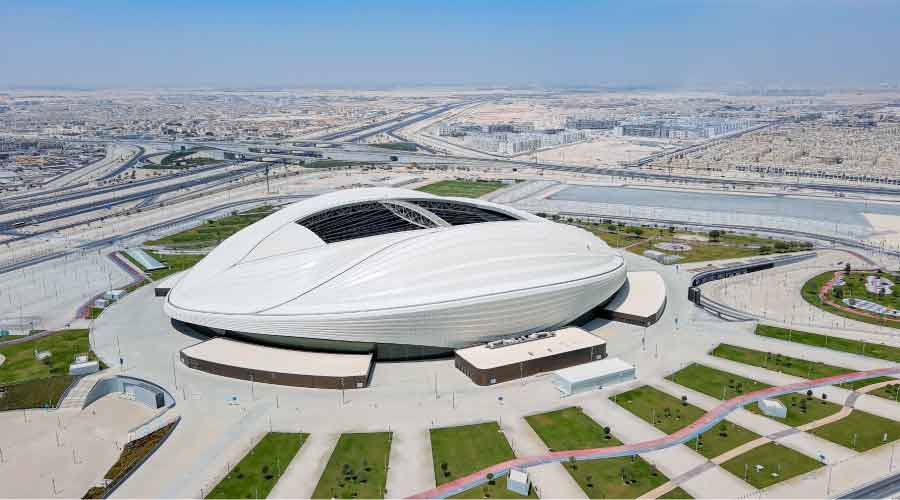
How Sustainable Will the World Cup Really Be?
New stadiums have high sustainability ratings and the event has a carbon neutral goal, but questions remain. November 22, 2022
By Greg Zimmerman, senior contributing editor
Say what you will about the decision to hold a sporting event that requires a lot of running in the middle of a desert (The World Cup takes place November 20-December 18 in Qatar), soccer’s organizing body, FIFA, is at least making an attempt to claim the World Cup is practicing sustainability. But is it really a green event?
Several of the newly built stadiums (reasonable minds can disagree about the true sustainability of building several new buildings for a single event) have received high levels of certification Global Sustainability Assessment System (GSAS), a LEED-like green building rating system. So at least from a construction standpoint, organizers did hit high marks for energy efficiency and resource conservation. But again, if you subscribe to the argument that the most sustainable building is the one not built, it’s hard to see how building so many new energy-using, even if low-energy-using, buildings is legitimately sustainable.
Organizers of the tournament have also pledged to make the entire event carbon neutral through a four-step process of awareness, measurement, reduction, and offsetting. This is a noble goal, but it’s the last bit in that four-pronged process that gives experts pause. How much of the event’s emissions will be offset? Is this truly sustainable?
You can read more about the event’s sustainability efforts here.
Greg Zimmerman is senior contributing editor for FacilitiesNet.com and Building Operating Management magazine.
Next
Read next on FacilitiesNet












